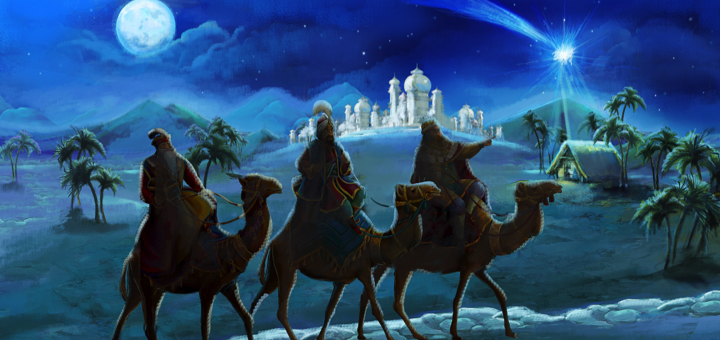The tradition of the Three Kings Day in Mexico

The Celebration is commonly called epiphany (in Greek is manifestation), it is celebrated on January 5 with a ring-shaped bread and hot chocolate, gathering the family, then after the children go to bed so that during the midnight of January 6 the Three Kings will leave the presents.
The story tells that the traditional arrival of the epiphanies, are 3 manifestations of the Life of Jesus:
- The Epiphany before the Kings from Orient (manifestation to the Pagans),
- The Epiphany of the Baptism of the Lord (manifestation to the Jews)
- The Epiphany of the Weddings of Cana (manifestation to his disciples).
The feast of the Epiphany is one of the oldest of the Christians, most likely the second after Easter; It began in the east and then moved to the west by the fourth century.
It is said that at first the Christians commemorated the three epiphanies on the same date, however, St. Augustine (fourth and fifth centuries) in his sermons of the Epiphany affirmed that they arrived on the 13th day after the birth of the Lord, January 6th of the current calendar.
The Kings of the Orient are characters quoted in the Bible, in the New Testament. It is little what is really known of them: it is ignored how many they were and where they came from, the names that were granted to them are Melchor, Gaspar and Baltasar, the tradition tells that they came from the Orient, in number of three, that they were guided by a star that led them to Belen. There they looked for the newborn infant Jesus and worshipped him, offering gold (present bestowed upon the Kings), incense (employed in worship in the altars of God) and myrrh (an embalming compound for the dead). But before arriving, in the city of Jerusalem, they found Governor Herodes the Great, who cunningly conjoined them, on their return, to speak with him to give him news of the exact place where the child was, so that he might go to worship him as well. (Actually, what he wanted was to kill him, so he ordered the slaughter of the innocent).
The story continues to tell how an angel appeared to the three wise men and warned them of the danger that Jesus was running if they obeyed Herodes desire. So, they didn’t go back through the same place.
Today, Mexico retains the tradition of bringing gifts to children to reassess the customs that generation after generation have been transmitted in the Catholic religion and in some cultures.
In Mexico the Kings are transported in different animals, Melchor mounts an elephant; Gaspar, a camel, and Baltasar, a horse.
It is said that Melchor carries sweets, treats and honey for the children; Gaspar clothes, shoes and useful things, while Baltasar punished bad children by leaving them charcoal or firewood. That’s why below the Christmas tree you can find various gifts from clothes to toys.
In previous days the children, leave a letter in the tree or a shoe with the letter, this is said to be so that the Kings do not make a mistake and leave the gifts in the right place. In Mexico it is said if you do not behave well you will not get a thing from the Kings or sometimes, they hide the toys in the house.
The toys that were traditionally left in Mexico, were made of wood like: The balero, the Matraca, boxers, lottery cards, colorful pieces of wood glued with slats that when stretched appear to be joined and not to move, but by taking them of one of the Ends creates the illusion that one of the tablitas is detached and goes to the other end but without separating from the others, among several typical toys.
Throughout time the toys have changed, however still maintaining the tradition of taking a picture with the 3 kings in the Alameda Central, where a fair with games and food stands.
As mentioned above another classic tradition is to eat the ring-shaped bread, have hot chocolate (in Mexico are embedded in the bread one or more dolls alluding to Jesus Christ, which symbolizes that the child had to be hidden and protected in the days of the story) but the person who gets a doll in his slice, is committed to give a party for all on the day of the Candelaria (February 2), celebration in which it is customary to offer tamales and atole.

